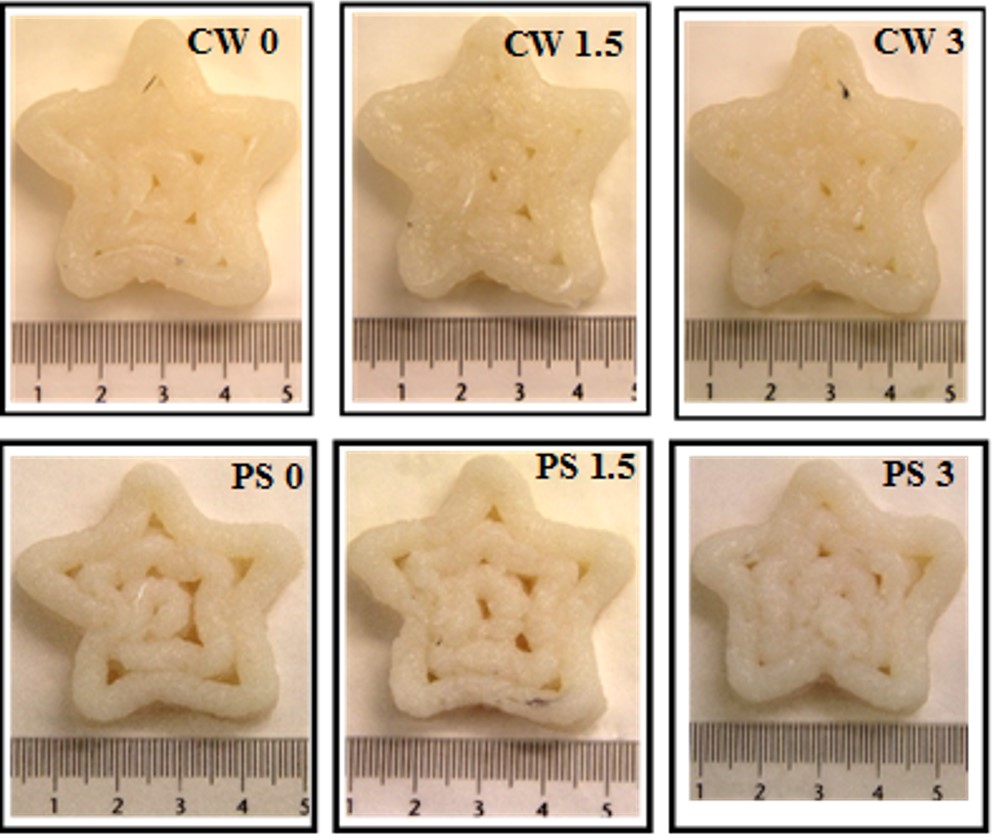"We all have to eat to stay in good health, but our consumption must also be in line with its environmental impact. It is thus important to promote responsible consumption where the balance between health, quality of life, and responsible use of resources and environment is achieved," says María Guðjónsdóttir, professor of food science at the University of Iceland. She and her colleagues are developing ways to 3-D print seafood using side streams from fish processing that have hitherto not been fully utilised.
María points out that requirements for full use of raw materials and marine resources are increasing in line with increased demands on minimizing the environmental impact of food production. It is thus important to seek new technical solutions to use the raw material as well as possible. "3-D printing in food processing has been fast developing in recent years but little research exists on the impact of 3-D printing in seafood. As Iceland is at the forefront in seafood production it is ideal to conduct such research here," she says.

María Guðjónsdóttir and Romauli Juliana Napitupulu.
María adds that 3-D printed foods take more diverse forms, making it more original and appealing. "This can make a big difference for groups that have difficulties in chewing or swallowing hard foods, such as children and the elderly, and can thus be a part of ensuring a more diverse diet for these groups. The research question mostly revolves on how to best utilise raw material in the fish industry to better adapt them to 3-D printing," adds María.
The research is a collaboration between the University of Iceland, MATÍS and UNESCO-GRÓ Fisheries Training Programme, formerly known as the United Nations University Fisheries Training Programme. The research is conducted by the doctoral student Romauli Juliana Napitupulu under María's supervision, and that of Sigurjón Arason, professor emeritus and head engineer of MATÍS, and Tumi Tómasson, former director of UNESCO-GRÓ Fisheries Training Programme, but they all have extensive experience in the seafood industry.
"3-D printing in food processing has been fast developing in recent years but little research exists on the impact of 3-D printing in seafood. As Iceland is at the forefront in seafood production it is ideal to conduct such research here," says María.

Use underutilized raw materials from whitefish processing
Research requires a lot of testing, and María says that during this phase emphasis is placed on finding the best processing methods "and how to handle the raw material to facilitate the process of printing healthy and good food from the cut-offs and other material that usually goes to waste in processing whitefish. We monitor the chemical composition, the physical and sensory characteristics, and the bioactivity of the product to evaluate the feasibility for product development."
The test results indicate good potential for using the cut-offs from whitefish processing for product development according to María. 3-D printing of this material provides further opportunities in product development and can lead to production of more diverse and healthy consumer products.

3-D printer from Natural Machines that was used in the project. Photo from the Natural Machines website.
"The knowledge created in the project will thus be useful to increase understanding of the raw material and how side products in whitefish processing can be used in the best way. The project furthermore gives an insight into the possibilities and limitations of 3-D printing technology with regards to food product development. This knowledge is not only useful for the academic community and industry, but can, in time, lead to the production and marketing of more diverse and healthy foods," says María on the significance of the study.
It is safe to say that the project entails considerable innovation and new steps in using products from the sea in a more sustainable manner, whilst adding to a more wholesome diet and increased quality of life. "This balance is the focal point in the UN Sustainable Development Goals, but this will not be attained, nor balance reached, except with good collaboration between experts in diverse fields and interdisciplinary research. Specialists at the University of Iceland's Faculty of Food Science and Nutrition have been avid in such research projects, and we will continue on this path," says María.




